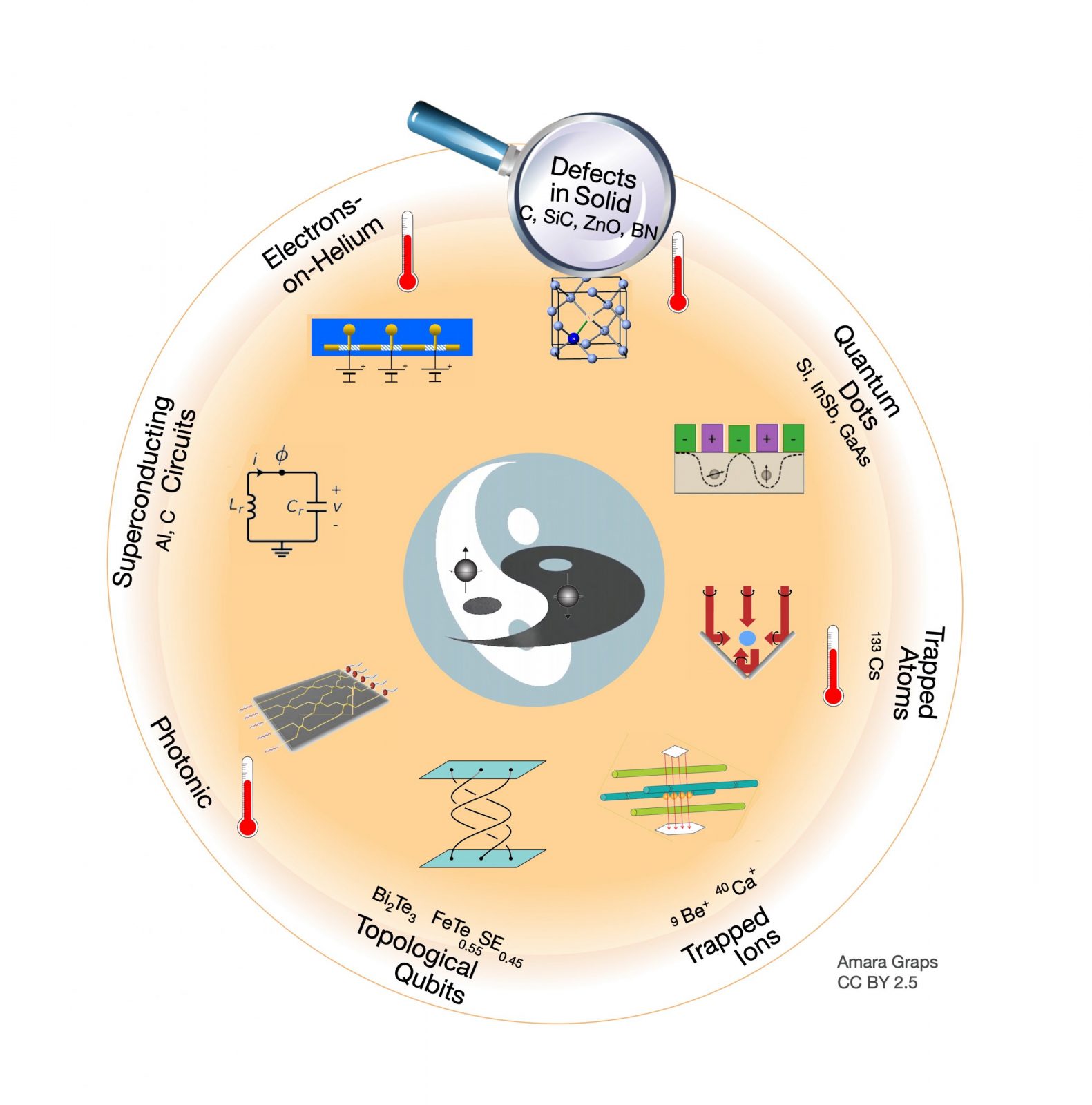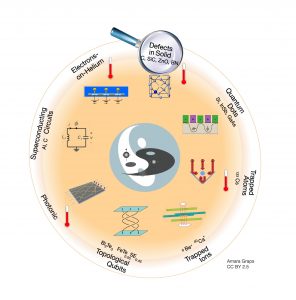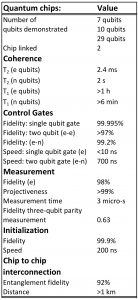Quantum diamond deficits and assets

(By Amara Graps) Situation: A frustrating quantum computer press announcement, with no performance metrics, while pointing to a white paper, with no data.
Can this quantum technology promise live up to its words? If the white paper contains scientific references, then we can dig in and assess. Here we have a room temperature quantum technology with at least forty-five years of study, Nitrogen-Vacancy (NV) centers in Diamond.
As NV centers in Diamond is amongst the oldest quantum information technologies to operate at room temperature (Fig. 1), well researched in the last decade, and a popular quantum technology subject (~37K, 2021 Wikipedia page-views), I consider consider the NV centers in diamond technology as a key representative of solid-state defect qubits; providing a major physics subfield of the realization of material qubits.

Figure 1. Mash-up art of quantum computer modalities. Concept inspired by Zhang et al, 2020, capturing a 3D Yin-Yang and embellished to indicate room temperature goals. In this article, I highlight: Defects in Solids. Graphic: Amara Graps.
NV centers in diamond assets
The negatively charged nitrogen-vacancy (NV) center, formed by a nearby carbon vacancy binding to a substituted nitrogen atom, has stood out as a solid-state spin qubit, due to
- A magnetically active, ground-level spin triplet state, with a sensitivity toward external fields,
- A high degree of microwave, coherent control of the transition between the ground-level spin states,
- A notable fluorescence photo-stability from the ground-level spin states, ensuring a clear readout contrast between the two qubit levels,
- Efficient qubit initialization of the ground-level triplet,
- Nuclear spins in the NV center cluster exhibiting dynamic polarization,
- Properties exploitable at room as well as cryogenic temperatures,
- Diamond being a biocompatible host,
- Stable emission of single photons, with an electron spin coherence time up to 1.8 msec at room temperature.
- Its suitability as an educational tool
NV center in diamond’s long electron spin relaxation time and coherence time, efficient initialization and optical read-out, can therefore be used for quantum information processing operations (computing, networks). The proximate nuclear spins can be used to store quantum information (memories). The system’s sensitivity toward external fields is a key factor for sensing applications.
For example, in the last decade, this quantum tool was successfully employed at the nanoscale, for fine sensing of magnetic and electric fields, strain, thermometry and NMR. Recent applications include magnetic detection of single-neuron action potentials, biological tissue with subcellular resolution, and single protein detection. In addition, this quantum tool for magnetic field sensing is inside of a jam-proof GPS prototype, and studies of meteorite composition. Sensitivities as high as 0.9 pT/Hz1/2 have been demonstrated in laboratory conditions. Compact systems have been demonstrated for commercial use. A future article will ‘probe’ these NV centers sensing successes further.
NV centers in diamond deficits
The NV centers’ sensitivity to their environment has a downside. Due to the spins’ environmental sources of decoherence, the present performance of ensemble-NV-center sensors, networks and processors remains far from their theoretical limits. Noise in the lattice or at the diamond’s surface, leads to broadened emission spectra with a weak emission into the zero-phonon line (ZPL), that puts an upper bound to the maximum photon rates achievable.
Therefore, considerable attention and progress in the last decade has been towards improving photon extraction. For example, spin manipulation protocols to control the NV center charge states have been developed, some which are material-independent. Other methods tailor the resonance spectrum by means of nanostructures, solid immersion lenses, plasmons, or optical resonators. Other research directions are applying predictive ab initio studies to find, and use, similar, but better-suited defect materials, such as SiV and GeV, for performance gains. Many of these detection limits may be overcome by using the NV center itself to characterize the surrounding defects. We can see the progress in the literature.
Research Progress for NV centers in diamond
Since 2011, there are approximately 1500 total NV centers in diamond quantum technology papers at arXiV with a 100% growth in the last decade. The fastest growth was during 2013-2017. The NV centers research picked up again in 2021, with a 35% papers growth over 2020.
While a 100% research growth in ten years sounds like a lot, the rest of the quantum technology field research grew faster: ~600%. For example, between 2020 and 2021, non-NV centers research output, i.e. all of those other quantum technologies, grew 60%.
The period of 2019-2020 in the NV centers in diamond research literature shows considerable reflection in the community (of at least 200 research teams) as if the pandemic triggered a need for large-scale assessment and analysis. The 11 key papers in those two years are reviews, ~2000 references in total, generally agreeing on the field’s challenges. The most densely referenced work of the collection is the readable Zhang et al, 2020. My other favorite recent NV centers review papers are:
- Rembold et al, 2020 (clear physics, examples, optimization algorithms),
- Bradac et al, 2019 (successfully explained physics without equations),
- Rogers et al, 2021 (addressed sensing, networks, computing), and
- Liu et al, 2021 (less polished English, but clearly-stated issues and solutions)
- Plus kudos for this Physics World 2020 article, written for an audience of non-quantum-tech scientists.
More Community, Less Silo-ing, please
Solutions to the NV in centers’ challenges are as broad as the inhomogeneously broadened frequencies of spin particles. A crosstalk of simultaneous efforts appears in the research literature, perhaps due to the interdisciplinary nature of quantum technology. Sometimes the published solutions didn’t consistently cite other solutions, which suggests there might be a silo-effect of research teams in the international community. More community interaction and communication, please.
Tenacity Wins
“The race of quantum computing modalities is completely useless without a focus on algorithms and applications.” (André M. König)
The goal of NV centers in diamond is the same as other quantum technology modalities: to create useful, consumer-oriented applications. The NV centers in diamond research shows that dogged determination is winning to provide some hardware that works, today.
A quantum computer is the most demanding of all the diamond quantum applications because it requires that each defect behave in exactly the same way, emitting light at precisely the same wavelength, to be indistinguishable in order to generate efficient entanglement, yet provide local addressability.
In particular, one uses the electron spin of the NV center as a quantum bus that initializes, mediates interactions between, and reads-out the coupled nuclear spins, which act as the physical qubits. The local addressability has been one of the toughest challenges, however a new approach using photoelectrical imaging can potentially solve that issue too.
In a May 2020 review, Pezzagna and Meijer provide a status of the necessary components to create a quantum computer based on NV centers in diamond, such as quantum error correction, couplings, quantum teleportation, and a quantum repeater, with their performance values. At the time of their publication, 10 qubits can be fully controlled. A subset is shown, in Table I.

Table 1. A selected May 2020 status by Pezzagna and Meijer of the NV-based qubits. Their paper provides temperatures and references for these values.
Tenacity + 35% research increase + progress means that this particular quantum technology will be in your News Feed more often.



















